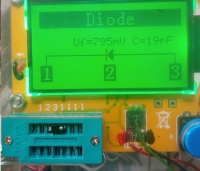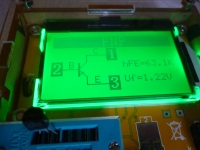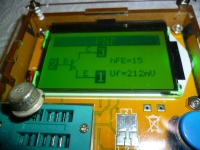huluk wrote: In other words, it is not very correct because we do not know if it is a rectifier diode, Zener or warikap

Hello. I think I've already written here - some colleagues have too high expectations from this type of testers. Maybe in addition to detecting the type of element, the tool should give the exact type / symbol (eg BC337), display the catalog note, find the store with the lowest price?

The T7 tester, which was already in topic, allows you to check Zener diodes up to 30V. For this purpose, it has a built-in voltage converter of approx. 40V. However, the diode must be connected to specially provided terminals, in addition in the right direction. How else should the device determine what voltage the diode starts to conduct in the blocking direction? A similar functionality seems to have "modified" versions of the tester discussed in this thread. I believe that this type of devices in practice are more suitable for confirming the efficiency of the elements we know, than "detecting" any unmarked, unmarked piece of wood from the drawer (I mean mainly semiconductors). So when we know, or we are convinced, to a degree that borders with certainty, that we are testing specifically eg the bipolar transistor npn. By the way of repairs, when somewhere on the table "wandering" element unmarked, as to which type / type I'm not sure, even when the devices seem to be efficient will be directed to the basket







